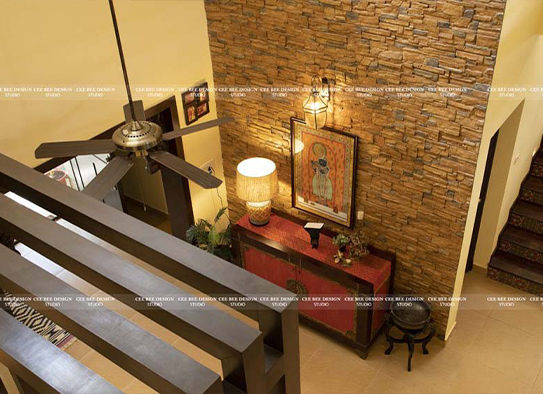- Home Owner Bangalore -
- Home Owner Kolkata -
- Other Enquiry -
Embracing Kerala Style Interior Design: A Timeless Blend of Heritage and Elegance

A Kerala-style house that reflects a deep connection to nature, crafted using locally sourced, natural materials.
Kerala, known for its stunning landscapes, also is rich with its architectural heritage. The Kerala homes reflect the state’s relationship with nature with sustainable materials and designs that are in sync with the climate.
The architecture of Kerala is derived from the Indian Vedic architectural tradition and forms a part of Dravidian architecture, one of the three styles of temple mentioned in the ancient books of Vastu Shastra.
Kerala homes are deeply rooted in the region’s geographical and climatic conditions featuring sloped roofs, spacious verandas and courtyards that provide natural lighting and airflow. These are not just for aesthetic choices but functional solutions to climatic challenges. Most of them are built using locally available materials like wood, laterite stone, and clay tiles, making them sustainable and eco-friendly. Unlike modern structures, these homes offer natural ventilation and cooling, essential for the tropical climate.
Below, we’ll delve into the distinct sections of Kerala houses that reveal the charm and practicality driving the return of Kerala-style interiors.
Why Kerala-Style Homes Are Making a Comeback?
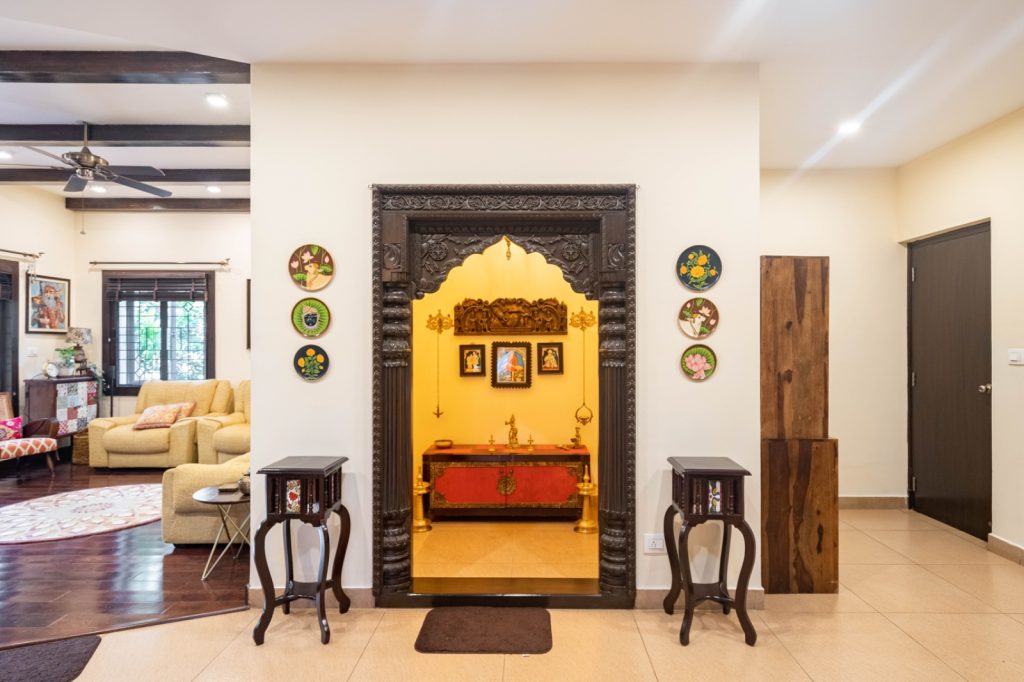
In a world dominated by high-rise apartments, glass facades, and minimalistic aesthetics, a quiet design revolution is unfolding – one that looks to the past for inspiration. Kerala-style homes are more than an architectural choice—they are a lifestyle statement, with their timeless charm, deep cultural roots, and sustainable sensibilities, making a graceful return to contemporary architecture and interior design. Let’s explore the reasons why this age-old tradition is resonating with today’s homeowners and designers.
They celebrate regional wisdom, environmental consciousness, cultural pride, and emotional well-being. Whether you’re restoring a family home or building a modern villa, incorporating elements of Kerala design can bring depth, purpose, and elegance to your space.
As we move forward, embracing the old may just be the most modern thing we can do.
Soul Elements of Kerala Style Interior Design
At the heart of Kerala-style architecture is harmony with nature. These homes are designed not just to exist within the landscape but to be part of it. With open courtyards (nadumuttam), wide verandas, and large windows, Kerala homes invite natural light, air, and greenery indoors. In a fast-paced urban world, this intimate connection to the outdoors provides a much-needed sense of calm and grounding.
Long before sustainability became a global buzzword, Kerala’s traditional architecture was already practicing it. The use of locally sourced, biodegradable materials like laterite stone, teak wood, terracotta tiles, and lime plaster makes these homes naturally eco-friendly and climate-responsive. Sloped roofs with overhangs, airy layouts, and internal ventilation systems help maintain comfortable temperatures year-round—without relying heavily on artificial cooling or heating.
In today’s environmentally conscious climate, this kind of low-impact, resource-smart design is more relevant than ever.
There is a growing movement among homeowners to reconnect with their roots, celebrate local traditions, and preserve architectural heritage. Kerala-style homes embody centuries of cultural wisdom and craftsmanship. From intricately carved wooden ceilings to mural art and brass oil lamps, every element has a story, a function, and a place in the cultural fabric of the region.
Kerala interiors strike a rare balance between simplicity and richness. Their warm wood tones, earthy color palettes, and graceful proportions give them a timeless beauty that transcends fleeting trends. These are homes that age gracefully, where textures develop patina, and imperfections add character.
For homeowners looking for long-term value—both aesthetic and emotional—this enduring style offers an ideal solution.
What makes Kerala-style design especially exciting today is its adaptability. You no longer need a sprawling ancestral property or a traditional nalukettu structure to embrace this look.
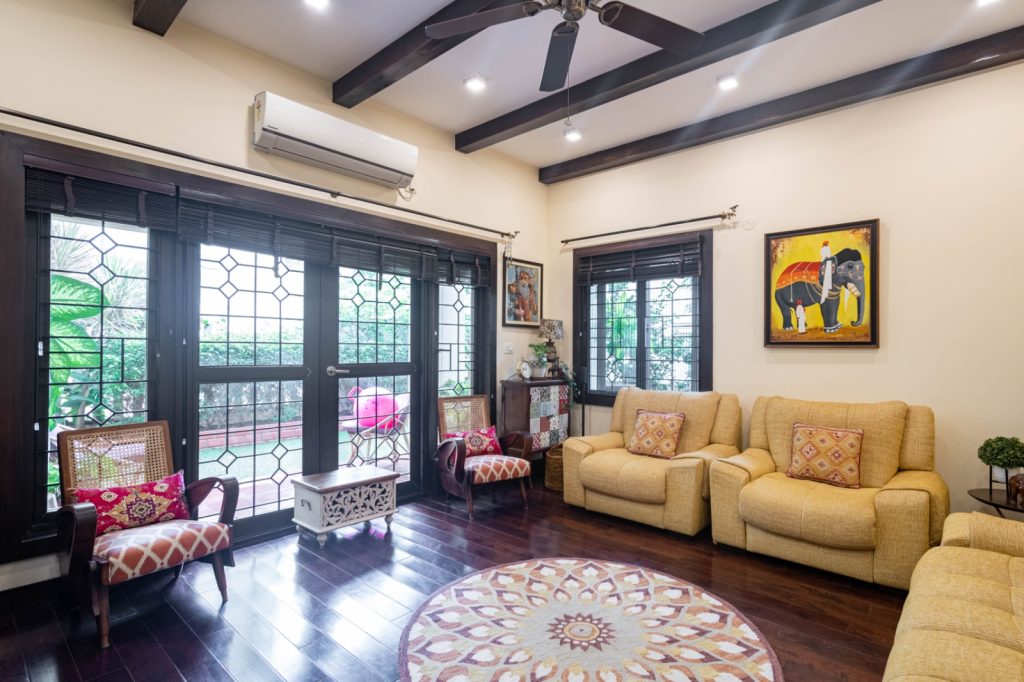
Modern homes and apartments are integrating Kerala-inspired elements into their layouts with great success. Think carved teak furniture in a contemporary living room, mural art on an accent wall, or a sunlit atrium in place of a nadumuttam.
Interior designers are finding creative ways to combine old-world charm with modern needs—offering heritage with a twist.
Today’s homeowners are increasingly prioritizing well-being—physical, emotional, and spiritual. Kerala-style homes, by design, promote a slower, more mindful way of living. Natural materials, open spaces, indoor-outdoor harmony, and minimal synthetic interference make for environments that reduce stress and foster peace.
This is especially meaningful in the post-pandemic era, where the home has become a sanctuary for many.
The comeback of Kerala-style design also benefits the local economy. Sourcing traditional materials, commissioning hand-carved furniture, or buying from local artisans helps preserve age-old crafts and supports sustainable livelihoods. This ethical dimension adds even more value to the beauty and meaning of the design.
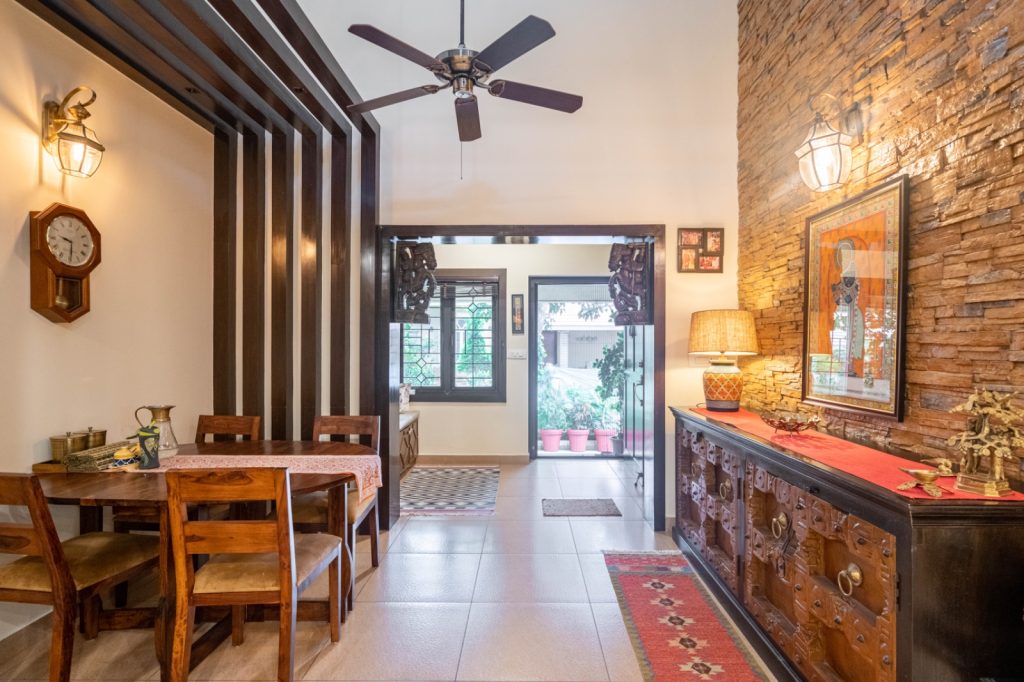
Sourcing the traditional materials and buying from local markets -
In the world of interiors, authenticity stands out. And when it comes to Kerala-style home design, nothing speaks louder than handcrafted materials, age-old techniques, and locally sourced décor that carries the essence of the land. Whether you’re designing a full-scale traditional home or looking to add a few Kerala-inspired touches to a modern space, sourcing the right materials and pieces is key to preserving the soul of this timeless aesthetic.
Let’s explore how and where we can find authentic Kerala-style décor and why buying from local markets and artisans makes all the difference.
Why Local Matters
Kerala’s interior style is deeply rooted in its geography, history, and culture. That means the most authentic elements—whether it’s carved teak furniture, brass lamps, or handloom textiles—are best found where they originate: local markets, workshops, and heritage towns across the state.
By sourcing materials locally, you’re not just getting high-quality, original pieces—you’re also supporting traditional artisans and helping preserve cultural craftsmanship that has been passed down through generations.

1.Jew Town, Kochi – A Treasure Trove of Antiques
Nestled in the historic part of Fort Kochi, Jew Town is one of the most iconic destinations for antique lovers. Here, you’ll find:
- Vintage furniture with intricate woodwork
- Ornate brass lamps and urulis
- Colonial-era décor and architectural salvage
- Framed Tanjore and mural art replicas
Many of the items are reclaimed from old mansions or temples, carrying with them layers of history and charm.
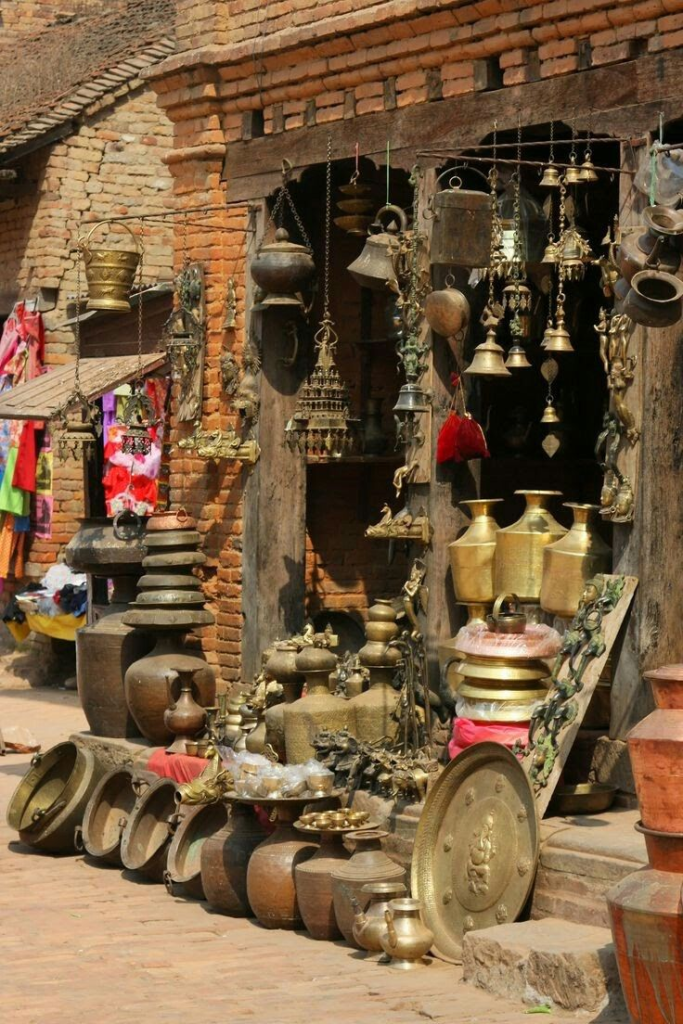
2. Thrissur – The Cultural Capital
Thrissur is the heartbeat of Kerala’s traditional arts. Visit local galleries and craft stores to find:
Hand-painted mural artworks
- Temple-inspired wooden sculptures
- Traditional percussion instruments and wall pieces.
- This city also hosts artisans skilled in making festival-inspired home décor, giving your interiors a vibrant cultural flair.

3. Chendamangalam – The Weaving Village
For authentic Kerala textiles, Chendamangalam is unmatched. Home to centuries-old handloom traditions, this small village offers:
- Kasavu fabrics with signature gold borders
- Cotton drapes, cushion covers, and bed linens
- Traditional dhotis and saris that can be repurposed as soft furnishings
You can often visit the weaving centers and interact directly with artisans—making your purchase personal and memorable.
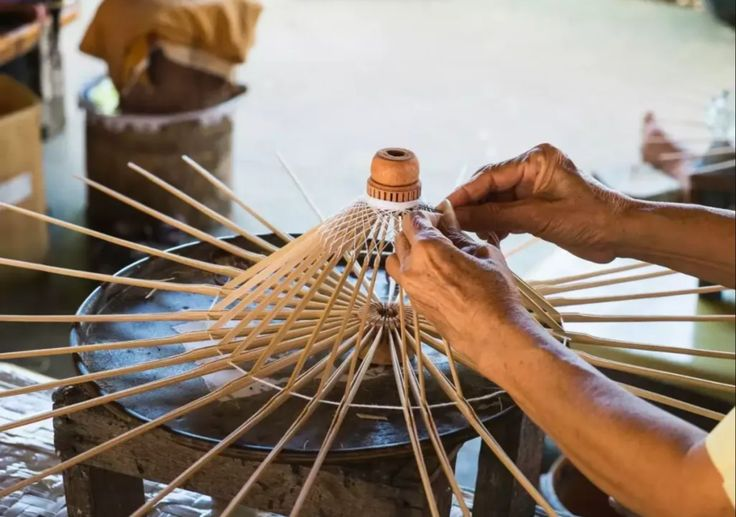
4. Alappuzha & Palakkad – For Cane, Bamboo & Coir
Known for their craftsmanship in natural fibers, artisans from these areas produce:
Cane furniture and ceiling panels
Coir mats and runners
Bamboo baskets and light fixtures
These elements not only add an earthy texture to your interiors but are also sustainable and lightweight—ideal for modern living.
What to Look For: Signature Materials and Elements
When sourcing for Kerala-style décor, keep an eye out for:
- Wood: Teak, rosewood, and jackfruit wood, often used for furniture, ceiling beams, and doors
- Metal: Polished brass and copper items, like vilakkus (lamps), urulis, or lotas
- Textiles: Handloom cottons, kasavu borders, coir-blended weaves
- Stone and Terracotta: Carved stone figurines, tiles, and planters
- Painted Décor: Mural art inspired by temples and folk stories
These aren’t just materials—they’re part of a narrative that connects your home to Kerala’s timeless aesthetic.

Room-by-Room Kerala Interior Guide
Creating a Kerala-style home is all about embracing authenticity, natural elements, and time-honored design choices—carefully tailored to each space in the house.
● Living Room
The living room sets the tone for the entire home and is often the most expressive space. Kerala-style living rooms typically feature solid wooden sofas with handcrafted frames, paired with neutral or earthy-toned cushions for comfort. Cane and rattan chairs add a touch of lightness and tropical appeal. A central brass uruli, often filled with water, flower petals, or floating candles, acts as both a decorative and symbolic piece—welcoming guests with warmth and tradition. To complete the look, wooden wall panels, antique mirrors, and a kuthuvilakku (traditional brass lamp) can add elegance and a spiritual touch.
● Kitchen
In traditional Kerala homes, the kitchen is both functional and deeply rooted in culture. Open wooden or bamboo shelves are preferred over closed cabinetry, displaying copper vessels, brass pots, clay cookware, and spice jars with pride. These not only enhance the aesthetic but also reflect a lifestyle of sustainability and slow living. The color palette remains grounded—think ochres, browns, and muted reds, complemented by natural materials like stone or terracotta tiles for the flooring. The overall feel is rustic yet practical, with enough room for modern appliances subtly blended into the traditional setup.
● Bedroom
Kerala-style bedrooms offer a peaceful retreat, focusing on simplicity, comfort, and natural materials. The centerpiece is usually a solid wood cot—often with a four-poster or carved headboard—crafted from teak or rosewood. The bedding is kept minimal, with soft cotton sheets, handloom throws, and warm lighting to create a serene environment. Instead of bulky wardrobes, you might find wooden almirahs or vintage chests. Neutral walls and minimal decor ensure the space remains uncluttered, allowing the rich textures of the wood and textiles to stand out.
● Bathroom
Even the bathroom in a Kerala-inspired home is designed to reflect nature and simplicity. Natural stone flooring (like laterite or slate) provides a textured, earthy base. Kerala-style open showers, often semi-outdoor or designed with large windows or skylights, allow natural light and ventilation—bringing in the feeling of bathing amidst nature. Fixtures are kept minimal, with brushed brass or copper taps and wooden-framed mirrors. Rustic finishes, clay or ceramic basins, and even small potted plants or bamboo screens add to the organic and calming experience.
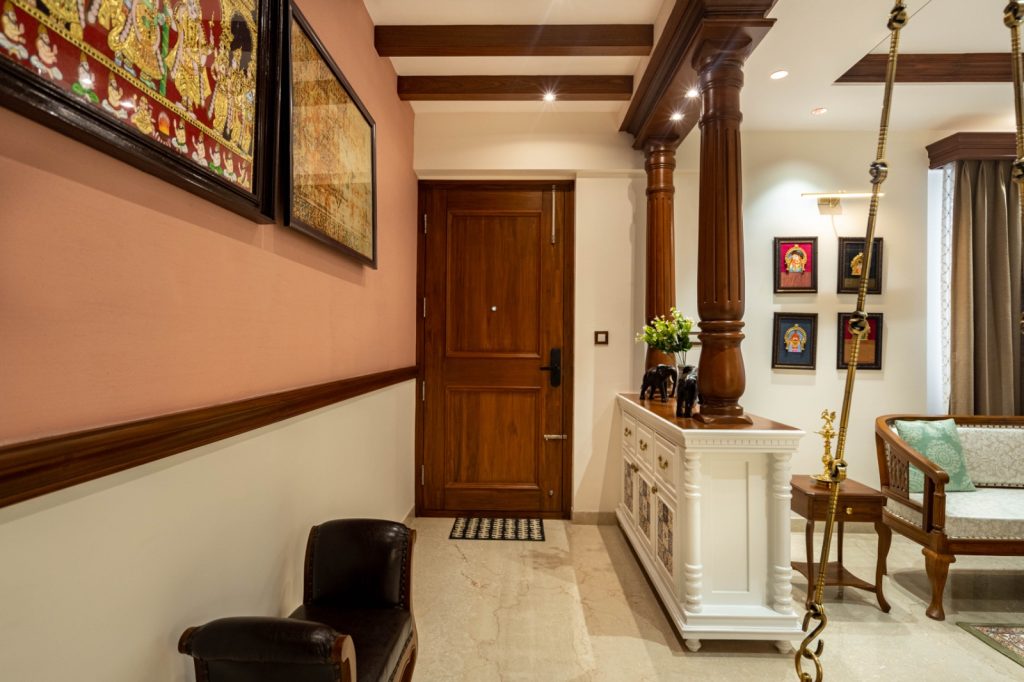
Color Palettes and Materials - Earthy hues
Kerala-style interiors are deeply inspired by nature, and this is beautifully reflected in the choice of colors and materials. The preferred color palette leans towards earthy, calming tones that create a warm and grounded ambiance. Shades of rich browns, warm beiges, off-whites, and muted greens dominate, mimicking the natural landscape of Kerala—lush greenery, soil, and aged wood. Accents in rustic reds, mustard yellows, or touches of gold from brass elements can be used sparingly to add depth and vibrance.
When it comes to materials, authenticity is key. Wood—especially teak, rosewood, or jackfruit wood—is a fundamental element, used extensively in furniture, ceilings, and decorative panels. Terracotta tiles, with their earthy texture and tone, are popular for flooring and even roof cladding. Natural stone, like laterite, granite, or sandstone, is used for both structure and aesthetics, particularly in flooring, bathroom surfaces, and garden areas. Handwoven cotton fabrics, cane, and bamboo are also used for upholstery, blinds, and decor accessories, adding tactile richness and a sense of calm.
Together, these colors and materials create interiors that are soothing, sustainable, and in perfect harmony with the region’s tropical essence.

Can’t Travel to Kerala? Here's What You Can Do
If you’re outside Kerala or even outside India, bringing home the authentic Kerala vibe is still very possible:
1. Work with a Designer Specializing in Kerala Interiors
Hiring a designer with regional expertise can be a game-changer. They understand:
- Which elements to prioritize for impact
- Where to source original or customized pieces
- How to adapt traditional designs for modern layouts and city homes
A good designer will also have relationships with artisans and suppliers, ensuring quality and authenticity.
2. Shop Through Online Artisan Platforms
There are several trusted Indian platforms and social enterprises that curate traditional goods directly from makers. Look for:
- Furniture brands specializing in South Indian designs
- Textile cooperatives offering handloom products
- Ethical brands supporting artisan communities
3. Commission Custom Pieces
If you’re after something specific—like a carved wooden swing or a traditional pooja shelf—reach out to artisan workshops that accept custom orders. It may take time, but the result is a one-of-a-kind piece that elevates your space.
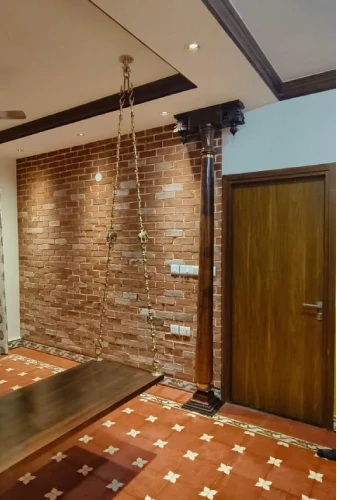
Communication is Key
Whether you’re working with a designer or sourcing items on your own, clarity of vision is essential. Do you want a fully traditional space or a modern one with Kerala-style highlights? Are you open to contemporary materials that mimic traditional ones?
You don’t need a grand nadumuttam to capture the Kerala spirit. Sometimes, a skylight-inspired atrium, a brass lamp, or even a mural-themed feature wall is enough to anchor your design in tradition.
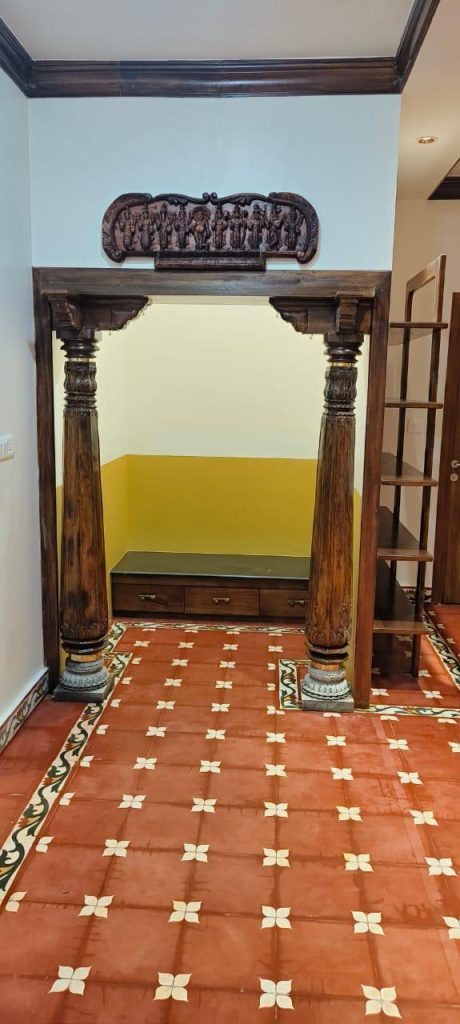
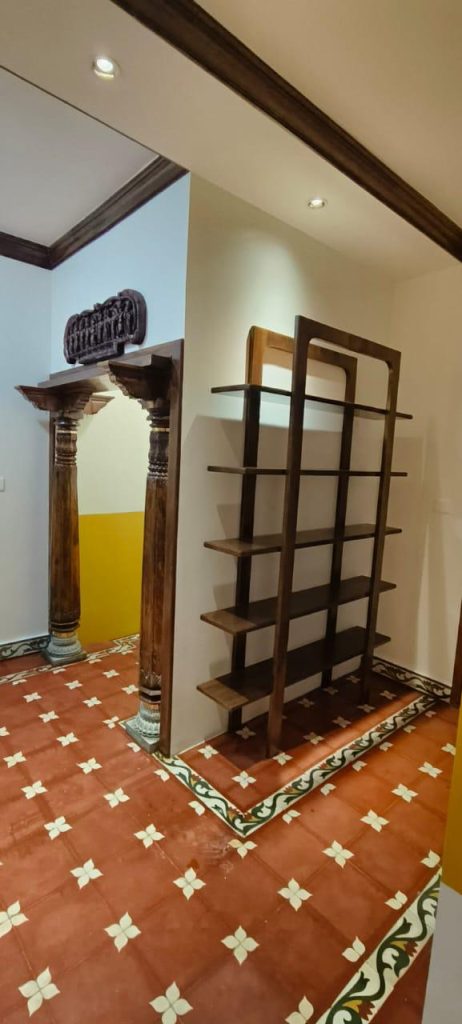
Final Thoughts: Decorating with Heart and Heritage
Decorating your home with authentic Kerala-style pieces is not just about visual appeal—it’s about embracing a way of life rooted in balance, tradition, and natural beauty. Whether you shop from a spice-scented street in Kochi or work with a designer miles away, every piece you choose becomes part of a story—yours and Kerala’s. In the end, what you’re creating is not just a home that looks beautiful—but one that feels meaningful.
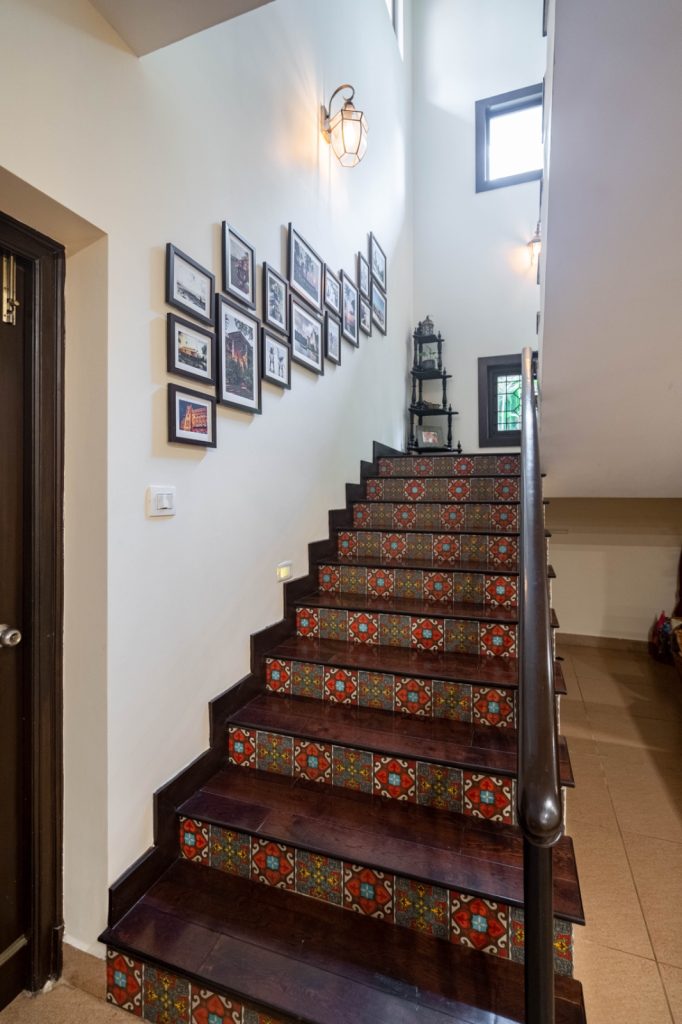
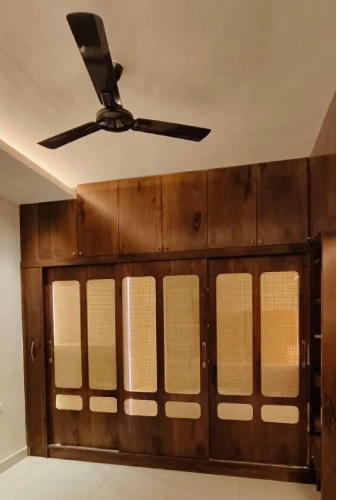
Frequently Asked Questions
What are the key characteristics of Kerala home interior design?
Kerala interiors are rooted in tradition and climate-conscious architecture. Sloped roofs, wooden carvings, open courtyards (nadumuttam), and wide verandas are common features. The design blends functionality with aesthetics, focusing on natural ventilation, sustainable materials, and cultural symbolism.
How does the climate of Kerala influence home design?
With its tropical monsoon climate, Kerala homes are designed for rain, humidity, and heat. Features like sloped tile roofs allow for rainwater drainage, while high ceilings, open courtyards, and verandas ensure airflow and cooling. The use of local materials like wood and clay tiles helps maintain a comfortable indoor temperature year-round.
Are modern design elements incorporated into Kerala homes?
Absolutely. Many modern homes borrow traditional elements like wooden furniture, brass accents, or mural art and incorporate them into contemporary layouts. The result is a balanced design that honors heritage while staying relevant to modern lifestyles and urban living.
What materials are commonly used in Kerala home interiors?
Kerala interiors rely heavily on natural, locally sourced materials. Wood varieties like teak, rosewood, and jackfruit wood are commonly used for furniture and ceilings. Terracotta, clay tiles, and natural stone are used in flooring and cladding. Cane, bamboo, cotton, and coir also make frequent appearances in upholstery and accessories.
Why are verandas important in Kerala homes?
Verandas (poomukham) serve both functional and cultural purposes. They act as transitional spaces between indoors and outdoors, providing shade and cooling, especially during the hot afternoons. Culturally, they are used to welcome guests, host conversations, or enjoy morning tea, making them an integral part of daily life in Kerala homes.
Similar Projects:
Follow us on:
About us
CeeBeeDesignStudio is a top-tier interior design consultancy, excelling in Interior Decoration and Turn Key Execution of Interior Works. With a strong presence in Kolkata and Bangalore, we have transformed over 1000+ residential projects and 300+ commercial spaces. Our team’s commitment to excellence and innovation ensures a remarkable design experience for every client.
Enter Your Details
About Us
CeeBeeDesignStudio is one of the fastest growing interior execution companies. Currently we have very strong presence in Bangalore, Goa, and Kolkata. Our motto is to keep the clients requirement and budget in mind and give a qualitative result on time.
Quick Link
Contact Info
- Door No-18, 3rd B Cross, Domlur II Stage, Bangalore 560071
- +91 8697306015
- chitralekha@ceebeedesignstudio.com
Contact Info
- 3045 Rajdanga main road, Kolkata, West Bengal 700107
- +91 8697306015
- chitralekha@ceebeedesignstudio.com
- Copyrigt © 2025 CeeBeeDesignStudio Pvt. Ltd



